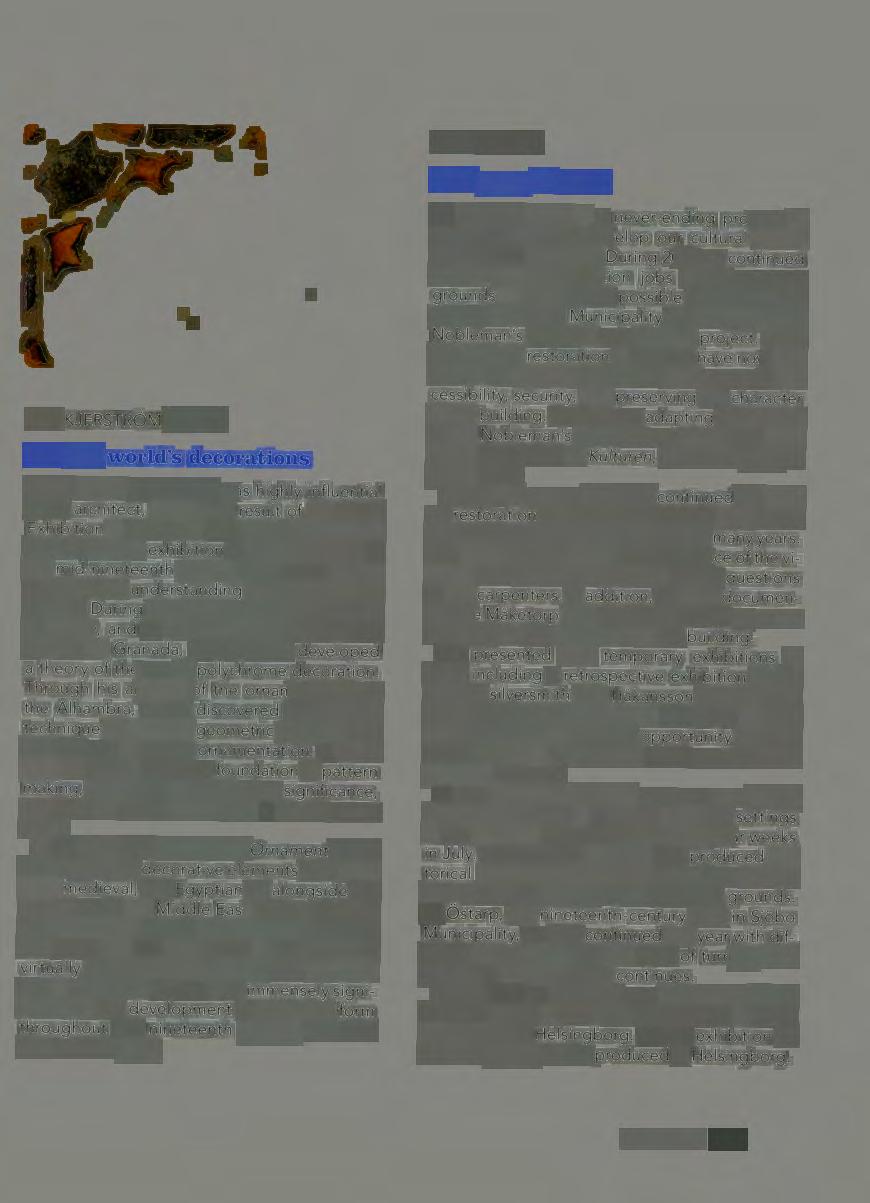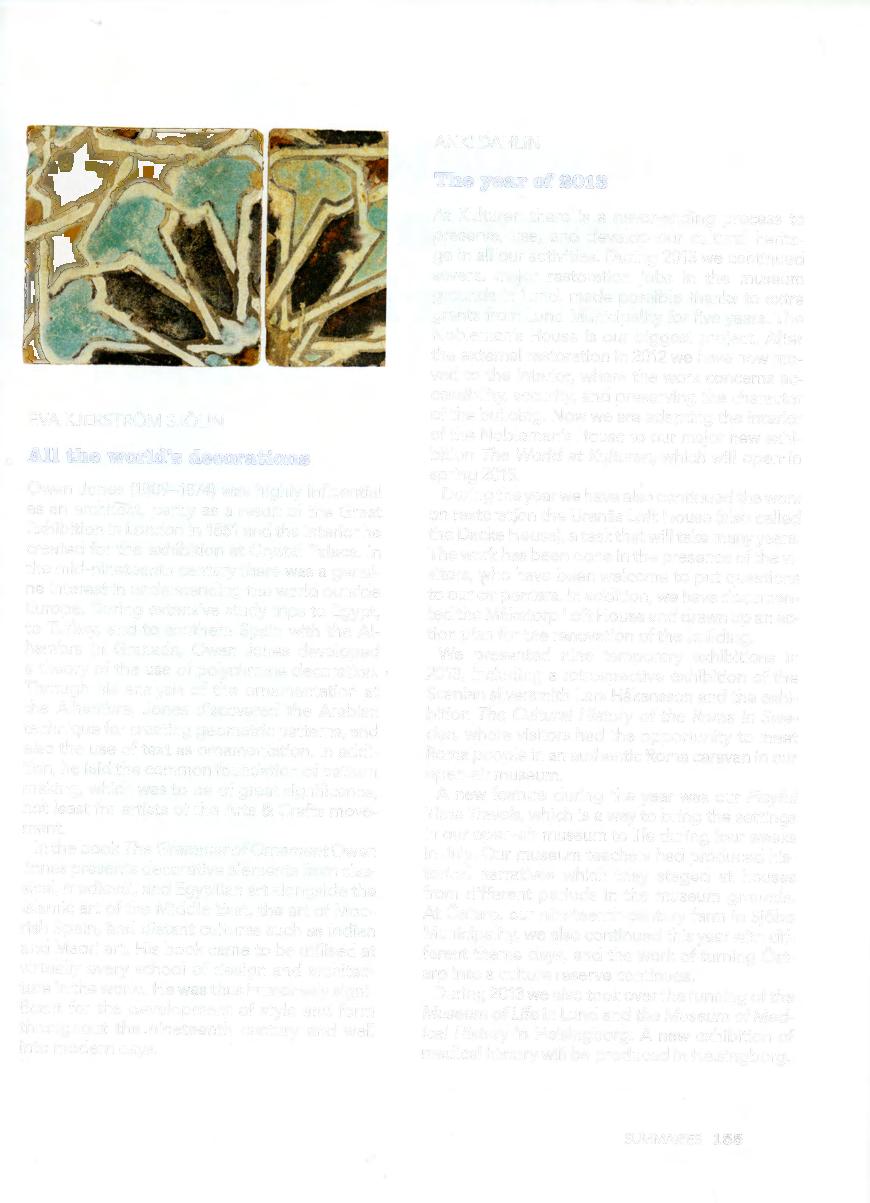
2 minute read
KULTURHISTORISKA FÖRENINGEN FÖR SÖDRA SVERIGE
by Kulturen
EVA KJERSTRÖM SJÖLIN
All the world's decorations
Owen Jones (1809-1874) was highly influential as an architect, partly as a result of the Great
Exhibition in London in 1851 and the interior he created for the exhibition at Crystal Palace. In the mid-nineteenth century there was a genuine interest in understanding the world outside Europe. Du ring extensive study trips to Egypt, to Turkey, and to southern Spain with the Alhambra in Granada, Owen Jones developed a theory of the use of polychrome decoration. Through his analysis of the ornamentation at the Alhambra, Jones discovered the Arabian technique for creating geometric patterns, and also the use of text as ornamentation. In addition, he laid the common foundation of pattern making, which was to be of great significance, not least for artists of the Arts & Crafts movement.
In the book The GrammarofOrnamentOwen Jones presents decorative elements from classical, medieval, and Egyptian art alongside the lslamic art of the Middle East, the art of Moorish Spain, and distant cultures such as Indian and Maori art. His book came to be utilised at virtually every school of design and architecture in the world. He was thus immensely significant for the development of style and form throughout the nineteenth century and well into modern days. ANKI DAHLIN

The year of 2013
At Kulturen there is a never-ending process to preserve, use, and develop our cultural heritage in all our activities. During 2013 we continued several major restoration jobs in the museum grounds in Lund, made possible thanks to extra grants from Lund Municipality for five years. The
Nobleman's House is our biggest project. After the externa! restoration in 2012 we have now moved to the interior, where the work concerns accessibility, security, and preserving the character of the building. Now we are adapting the interior of the Nobleman's House to our major new exhibition The World at Kulturen, which will open in spring 2015.
Du ring the year we have also continued the work on restoration the Uranäs Loft House (also called the Dacke House), a task that will take many years. The work has been done in the presence of the visiters, who have been welcome to put questions to our carpenters. In addition, we have documented the Måketorp Loft House and drawn up an action plan for the renovation of the building.
We presented nine temporary exhibitions in 2013, including a retrospective exhibition of the Scanian silversmith Lars Håkansson and the exhibition The Cu/tura/ History of the Roma in Sweden, where visiters had the opportunity to meet Roma people in an authentic Roma caravan in our open-air museum.
A new feature during the year was our P/ayfu/ Time Travets, which is a way to bring the settings in our open-air museum to life du ring four weeks in July. Our museum teachers had produced historical narratives which they staged at houses from different periods in the museum grounds. At Östarp, our nineteenth-century farm in Sjöbo Municipality, we also continued this year with different theme days, and the work of turning Östarp into a culture reserve continues.
During 2013 we also took over the running of the Museum of Life in Lund and the Museum of Medical History in Helsingborg. A new exhibition of medical history will be produced in Helsingborg.










